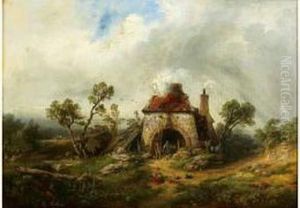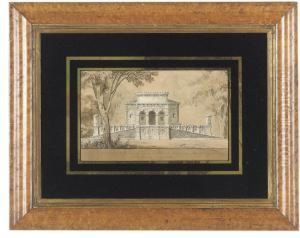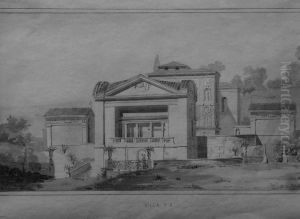Hippolyte Lebas Paintings
Hippolyte Lebas, born in 1782, was a prominent French architect during the 19th century. His career is marked by a deep commitment to the Neo-Classical style, which was dominant in France during his early years, before transitioning into a more eclectic approach that incorporated elements of Gothic revival and other styles. Lebas received his education at the École des Beaux-Arts in Paris, which was the leading institution for art and architecture in France at the time. This education laid the foundation for his extensive career in architecture and teaching.
Lebas's contributions to architecture include a range of significant projects. Among his notable works is the restoration of the Church of Saint-Vincent-de-Paul in Paris, a task that showcased his ability to blend historical accuracy with contemporary needs. This project, completed in the 1840s, is often cited as a prime example of his skill in handling Gothic revival elements, a style that was becoming increasingly popular in France and across Europe during that period.
In addition to his architectural projects, Lebas also played a significant role in academia. He served as a professor at the École des Beaux-Arts, where he influenced a generation of architects with his teachings on architectural history and theory. His academic role underscored his belief in the importance of historical knowledge as a foundation for contemporary architectural practice.
Lebas's impact on French architecture is also notable for his involvement in urban planning projects in Paris, contributing to the transformation of the city's landscape during the 19th century. His work spanned various types of buildings, including churches, public buildings, and private residences, reflecting the diversity of his architectural practice.
Hippolyte Lebas died in 1867, leaving behind a legacy as a key figure in 19th-century French architecture. His work continues to be studied for its contributions to architectural history, particularly in the areas of restoration and the development of Neo-Classical and Gothic revival styles in France. Throughout his career, Lebas demonstrated a profound respect for historical architecture while also embracing the challenges and opportunities of modern architectural design.















